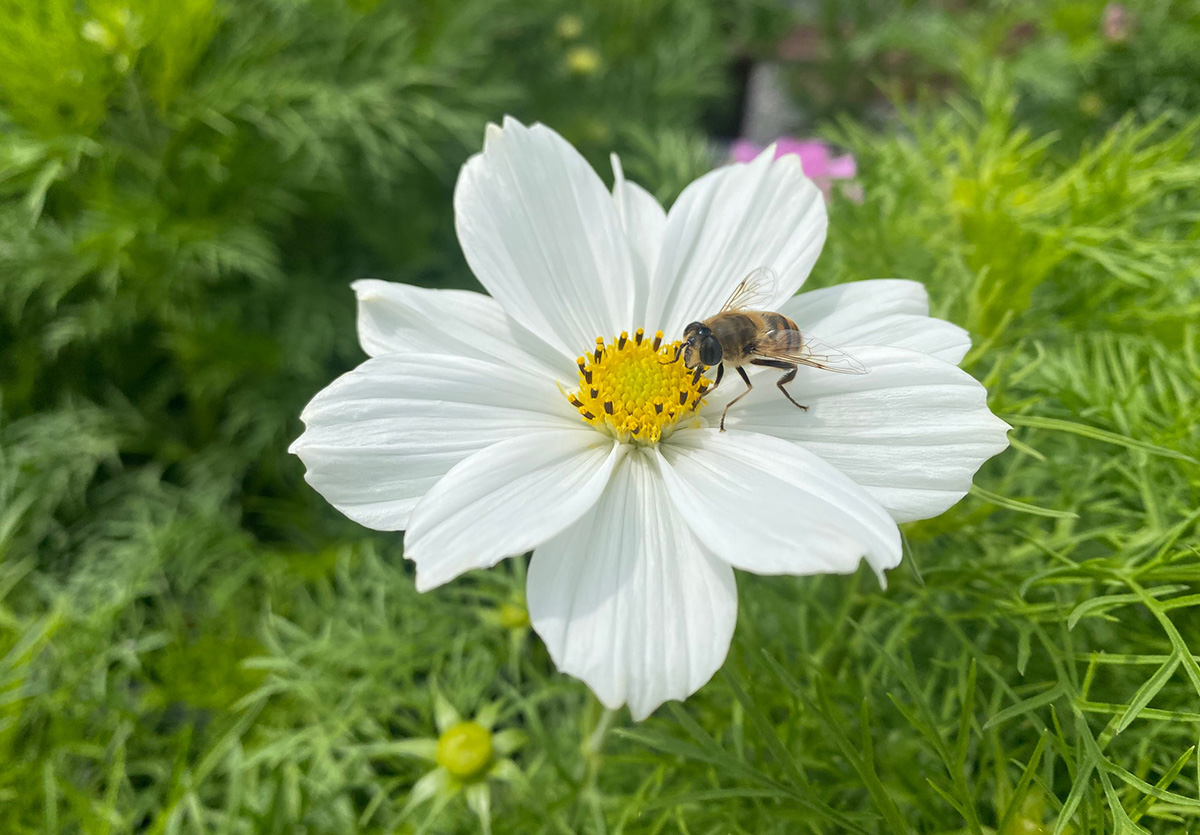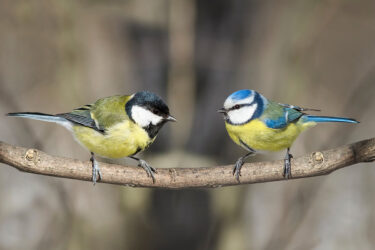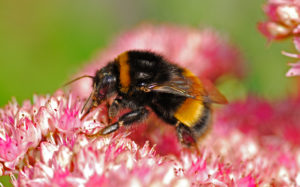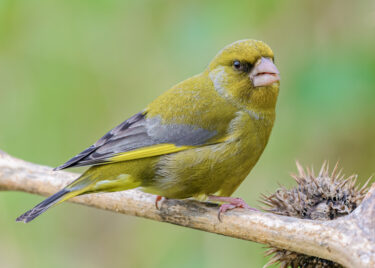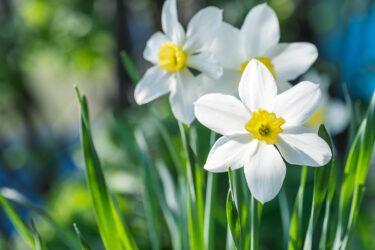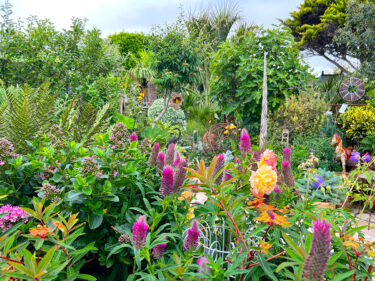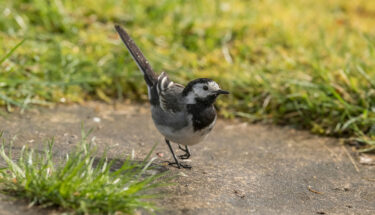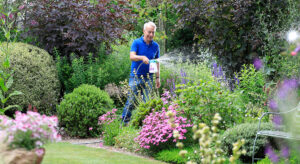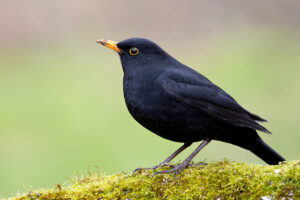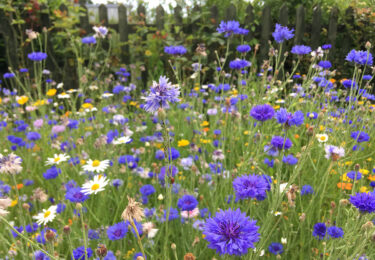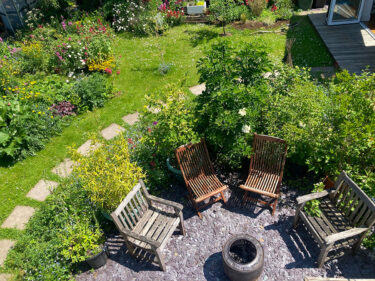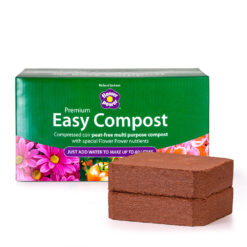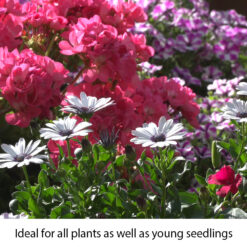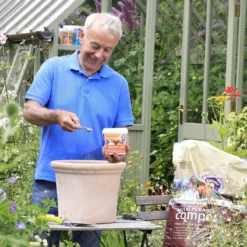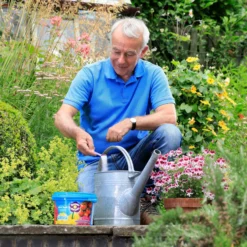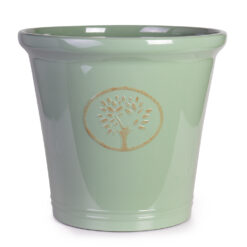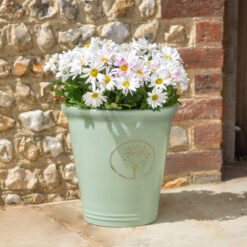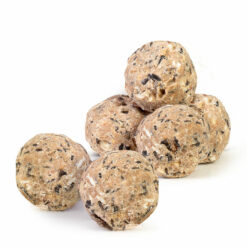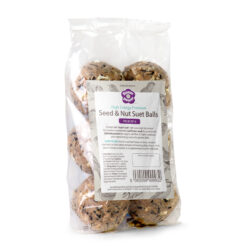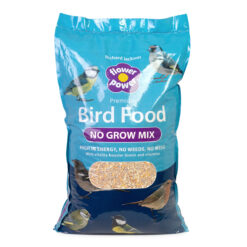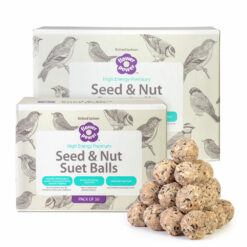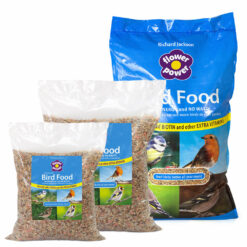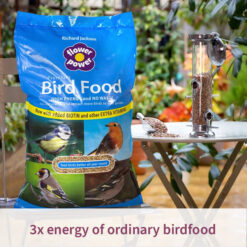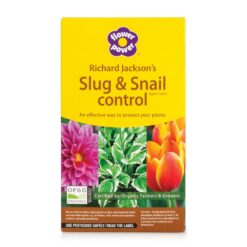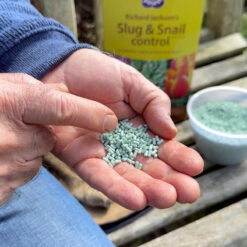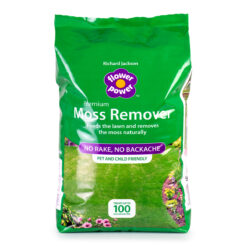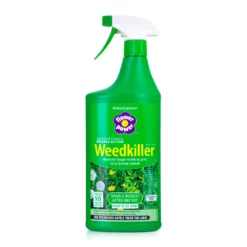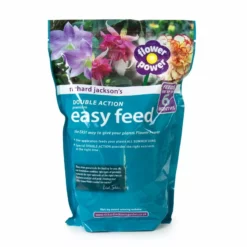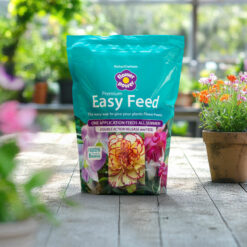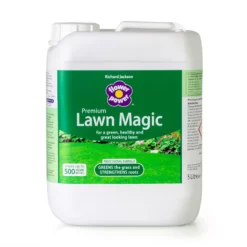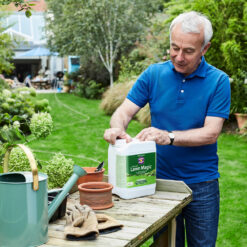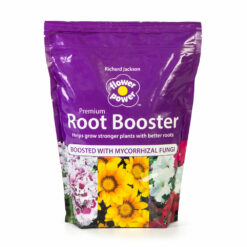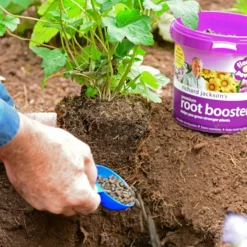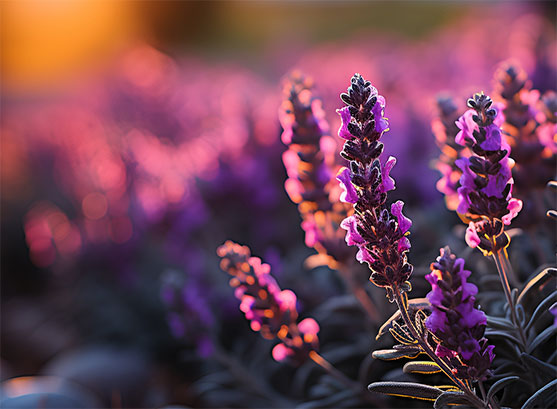If you’ve started noticing the insects in your garden you will have seen the hoverflies. You might even have confused some of them with a bee. And that’s really not surprising as many hoverflies are bee mimics, replicating the stripy yellow/black bee-livery to fool predators into thinking that they might sting. Hoverflies can’t and don’t sting.
In the UK there are around 270 different species of hoverflies and many of these visit flowers.
Hoverflies hover, though some other flies can do that too. They also visit our garden flowers to feed on nectar and are especially common during summer when the bees are on the wing too.
Hoverflies are very important garden pollinators and have been described as the unsung heroes of the garden. Hoverflies are underrated and misunderstood and in fact have very vital roles to play in the garden, agriculture and in nature. So much so that the humble hoverfly is considered to be the second most important pollinator after the bees.
Baby food
Hoverflies don’t eat your plants. In fact, many hoverflies have insectivorous larvae that eat aphids and other small invertebrates that some gardeners consider to be pests. Some hoverflies feed on rotting wood and decaying vegetable matter.
But hoverflies are also an important layer in the food chain and many are food for our insect-eating birds, reptiles and amphibians and of course other predatory insects.
Like all of our insect pollinators, hoverflies have three main phases of their growth, egg, larval stage and adult. But the habitats needed for different larvae are variable, some feed on live prey, while others are aquatic.
The female chooses where to lay her eggs depending on the needs of her larvae. Aphid eating species usually lay the eggs near to aphid populations or on plants that are susceptible to aphid infestation such as nettles and roses. The hoverfly larvae are blind and can’t move too far so they need a food source close by when they hatch from their egg. They don’t eat your plants and are often small and translucent.

It’s a good idea to understand what hoverfly larvae look like so that you don’t confuse them for ‘pests’ or try to remove them from your plants. The simplest solution is to live and let live and simply observe whatever life you find in your garden and greenhouse and try and learn as much as you can. In the meantime, here are five ways to help garden hoverflies.
Grow landing pads
Hoverflies (and other flies) have short-tongues so they need easy access flat flowers, or short flower tubes to feed from.
The light and airy and frilly flowering pads of the carrot family (apiaceae) are fantastic food plants for short-tongued pollinators like the wasps, hoverflies and other flies. They are also a beautiful addition to the border. Plants like dill, fennel, angelica, Ammi majus and Queen Anne’s lace are all lovely plants for the garden. But hogweed, wild carrot and the other umbellifers are also important pollinator plants too as are the daisy family and the short-flowered herbs like thyme and mint.

Live and let live
The intricate details of the interconnectedness of our gardens and planet is still an unsolved mystery. We know about some of it, but we really don’t know or understand the intricate ways that different species support, co-exist or predate on each other. So, when we randomly brandish pest killers in our gardens, we literally have no idea of the consequences. How many of us know what a baby hoverfly looks like or indeed any other egg, larvae or creature. Every single creature and organism has a part to play in nature. If we spray the aphids and kill them, then we starve the next layer in the food chain. It really is time to realise that our plants are one of the bottom layers of the food chain. We need to start to live and let live so that nature can restore the natural balance. Even wasps play a role in the lifecycle of some of the hoverflies, especially the Volucella species, which include the spectacular hornet mimic hoverfly (Volucella zonaria), which lay their eggs inside wasp nests and their larvae survive as brood parasites, feeding on dead wasp workers and even wasp grubs. Without the wasp nest these hoverflies would struggle to survive

Encourage aphids
You might think it counter-intuitive to embrace aphids in the garden, but if we change our mindset and welcome these little critters into our plot, we are actually supporting many many other creatures including hoverflies, ladybirds and also our garden birds.
We can encourage aphids by leaving a patch of nettles in a sunny patch, growing more roses and allowing the aphid populations to feed on our sappy plant stems. Make a dead hedge, or stack up sticks and stems somewhere in the garden to break down.
When you see aphids, stand back and watch, because it won’t be long before you notice birds flitting around the aphid infested plants, especially the blue tits and other small insectivorous birds. Look out for ladybird larvae and adult ladybirds that devour aphids and also wasps which feed the aphids to their larvae. Hoverfly larvae feast on aphids before they become adults. An explosion of aphids is a feeding frenzy for the next layer in the food chain, providing protein rich food when it is needed the most.
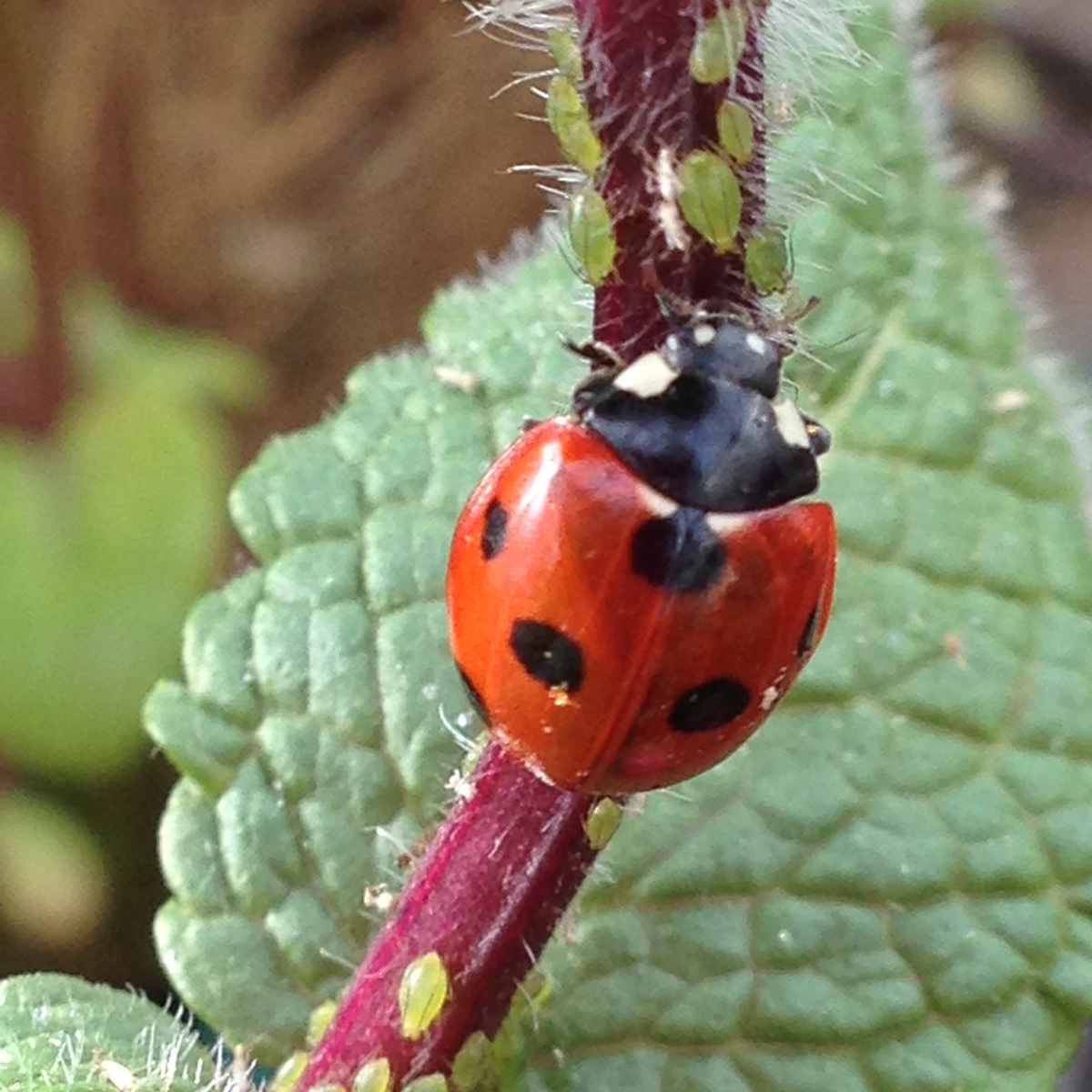
Stop using toxins
We don’t need poisons and chemicals in our gardens. The natural balance does it for us and for free. Imagine how many more plants you can buy with the money you saved by not using garden chemicals. It’s fine to keep a check on your plants, or even wash creatures off your plants for the ground feeding birds to feed on. But think before you reach for pesticides. They are not selective and will also kill beneficial creatures. Some chemicals linger on your plants and others are taken into the plant to kill any sap sucking pests that choose to feed on your plants. By growing without poisons, you keep your garden healthy and any food or ingredients that you grow to feed yourself and your family stays free from chemicals too.
Make a hoverfly lagoon
It might surprise you to know that some hoverflies breed in stagnant water and that you can get the kids involved and create a hoverfly lagoon this summer.
Basically, what you need is a shallow bowl of stinky, rotten leaves and vegetation to tempt the female hoverfly to lay her eggs there. It needs to stay moist, warm and wet to stay rich in the microbes and teeny tiny organisms that feed her larvae. These hoverfly larvae have tails, which are a breathing tube and can be short or long depending on the species. They suck in the microbe rich ‘water’ to feed and eventually pupate into an adult hoverfly. Keep it filled with rainwater (not tap water) in a wild and quiet part of the garden.
